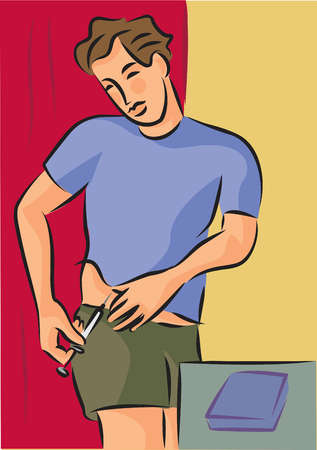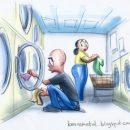 My name is Fred, and I am a Type I diabetic. It’s been about 4 hours since my last shot of insulin. (In a 12-step parody, this is where you’d say, “Welcome, Fred.”)
My name is Fred, and I am a Type I diabetic. It’s been about 4 hours since my last shot of insulin. (In a 12-step parody, this is where you’d say, “Welcome, Fred.”)
I’m a grizzled veteran of the diabetes wars, having developed Type I diabetes (formerly called “juvenile diabetes,”) when I was eight.
My symptoms developed while I was visiting my grandfather. In the middle of the trip, I started drinking everything I could get my hands on and peeing all the time. When I got home, I went to the hospital for some tests. Two days later, it was official. I must have overheard the nurses talking, because when my parents broke the news to me, I said “well, I won’t get into the army.” I really had no idea what the diagnosis foretold.
A couple years after that, I went to a summer camp for diabetic children. It was a great place, with all the accoutrements: pool, horses, arts and crafts, archery, a lake for canoeing, evening dances and 4-times daily urine tests. I know, that last item makes it sound like a celebrity rehab center. In addition, we had a staff doctor who delivered lunch-time lectures with admonitions about diet, exercise and healthcare. And instead of ghost stories, some of the kids would tell about their grandparents who had lost their feet and eyesight from the disease.
Back then, there were no home tests for blood sugar, no quick finger-stick and 5-second answers. Diabetics had to pee on a test strip to get a rough idea what their blood sugar was in the hours prior to testing (urine sugar lags well behind blood sugar as an indicator.) I remember my first “diabetes doctor” telling me that a cure was about ten years away; I recently read that we might now be as close as ten years to a cure for diabetes.
Diabetes control in the old days was largely guesswork. As a result, lots of diabetics from my era have suffered complications, including kidney disease, retinal disease, foot problems, peripheral neuropathy and heart disease. That’s my list, anyway. The additional afflictions finally drove home the message the camp doctor was trying to deliver: eat better. Exercise more. Monitor your blood sugar several times a day (that’s what he would have said if the technology had been around.) I’m doing those things and feeling healthy today—in spite of my disease!
Lately, I’ve noticed that almost all the literature and TV commercials I see focus solely on Type II diabetics—so-called “adult-onset” diabetics. The messages are valid (“eat better, exercise more…,”) but the stories don’t connect with me. The people on the commercials look and sound just like me but I’ve lived through what they’re hoping to avoid. The advertisers must assume that if a person has had Type I diabetes as long as I have, he or she must be doing something right to still be alive. That’s true, of course, but that doesn’t make it any easier to stay on track. I may walk an hour a day, but I’m really a cheesecake-eating couch potato at heart.
Luckily, I live near a big city, with several comprehensive medical facilities—including the one where I got my most recent kidney transplant and my pacemaker. They also have a monthly support group for Type I diabetics. It’s a self-selected group of self-motivated people who share their successes and offer wide advice: dealing with insurance regulations, travel tips, recipes and more. And mutual motivation to minimize the cheesecake. Trying to create behavior change through self-help.
The discussions probably wouldn’t interest anyone other than a Type I diabetic—even Type IIs might be bored. I’ve also noticed that the younger and older generations tend to stick together when we break for coffee. That’s just natural, of course, but it may have something to do with the fact that most of the “kids” haven’t developed complications from the disease, so they’re not interested in hearing about my kidney transplant, my healthcare, for example. That additional bit of self-selection within the group underscores the simple fact that the stories that most interest us (as diabetics or human beings) are the ones we can relate to directly.
Which leaves me wondering: where do Type I diabetics who don’t live near cities with health centers and support groups go to hear stories that resonate with them? Could my story help motivate them to take control of their disease? How will we connect? That last question is a set-up, of course; this entire website is dedicated to emotional connections and storytelling. But now you know why I’m involved and why I believe emotive storytelling offers some good possibilities.










No comments yet.